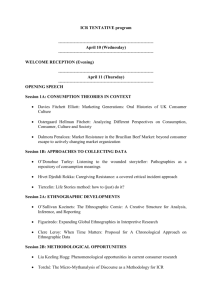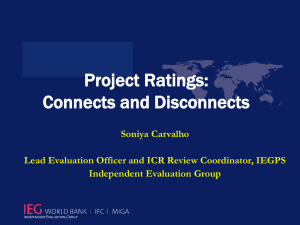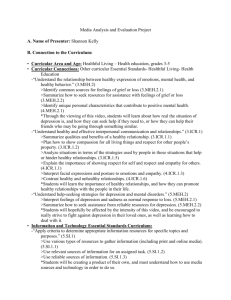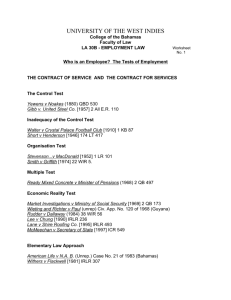S. Fredman `Reforming Equal Pay Laws` (2008)
advertisement
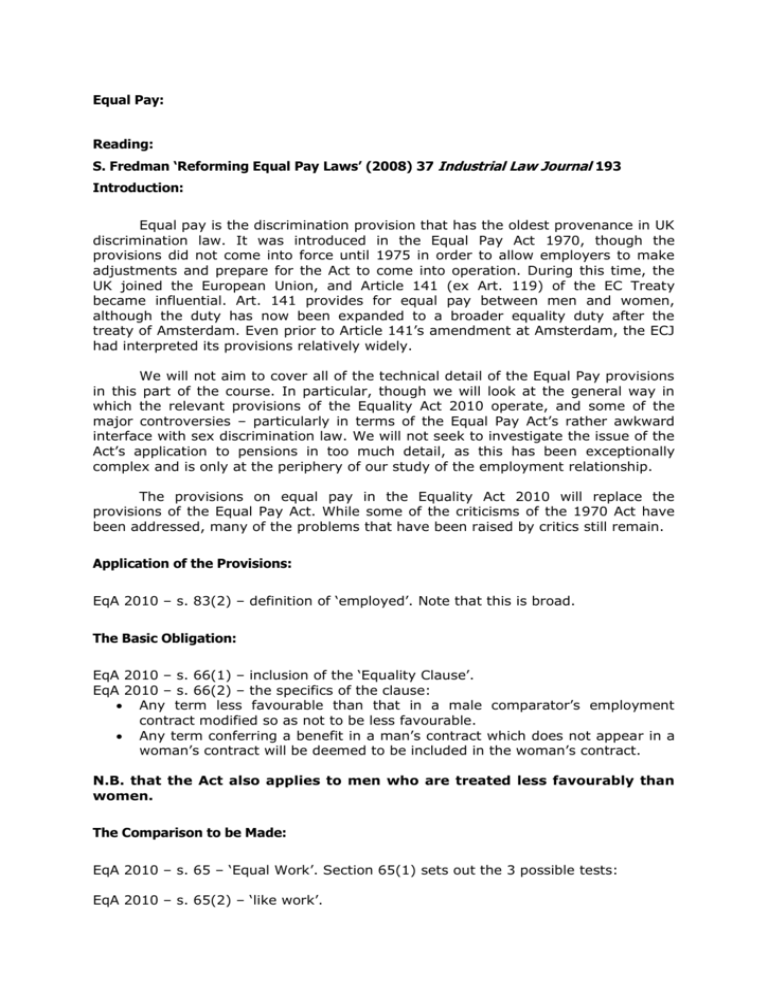
Equal Pay: Reading: S. Fredman ‘Reforming Equal Pay Laws’ (2008) 37 Industrial Law Journal 193 Introduction: Equal pay is the discrimination provision that has the oldest provenance in UK discrimination law. It was introduced in the Equal Pay Act 1970, though the provisions did not come into force until 1975 in order to allow employers to make adjustments and prepare for the Act to come into operation. During this time, the UK joined the European Union, and Article 141 (ex Art. 119) of the EC Treaty became influential. Art. 141 provides for equal pay between men and women, although the duty has now been expanded to a broader equality duty after the treaty of Amsterdam. Even prior to Article 141’s amendment at Amsterdam, the ECJ had interpreted its provisions relatively widely. We will not aim to cover all of the technical detail of the Equal Pay provisions in this part of the course. In particular, though we will look at the general way in which the relevant provisions of the Equality Act 2010 operate, and some of the major controversies – particularly in terms of the Equal Pay Act’s rather awkward interface with sex discrimination law. We will not seek to investigate the issue of the Act’s application to pensions in too much detail, as this has been exceptionally complex and is only at the periphery of our study of the employment relationship. The provisions on equal pay in the Equality Act 2010 will replace the provisions of the Equal Pay Act. While some of the criticisms of the 1970 Act have been addressed, many of the problems that have been raised by critics still remain. Application of the Provisions: EqA 2010 – s. 83(2) – definition of ‘employed’. Note that this is broad. The Basic Obligation: EqA 2010 – s. 66(1) – inclusion of the ‘Equality Clause’. EqA 2010 – s. 66(2) – the specifics of the clause: Any term less favourable than that in a male comparator’s employment contract modified so as not to be less favourable. Any term conferring a benefit in a man’s contract which does not appear in a woman’s contract will be deemed to be included in the woman’s contract. N.B. that the Act also applies to men who are treated less favourably than women. The Comparison to be Made: EqA 2010 – s. 65 – ‘Equal Work’. Section 65(1) sets out the 3 possible tests: EqA 2010 – s. 65(2) – ‘like work’. EqA 1970 – s. 65(4) – ‘work rated as equivalent’. EqA 1970 – s. 65(6) – ‘work of equal value’. Hayward v. Cammel Laird Shipbuilders Ltd. [1988] ICR 464. Degnan v. Redcar & Cleveland BC [2005] IRLR 615. Brownbill v. St Helens and Knowsley Teaching Hospitals NHS Trust [2011] EWCA Civ 903. Suggests perhaps that Degnan turned on its peculiar facts? (a) – Like Work: EqA 2010 – s. 65(2)(a) and (b) – ‘...of the same or a broadly similar nature’ and differences are ‘not of practical importance in relation to terms and conditions of employment’. Capper Pass v. Lawton [1977] ICR 83. Eaton Ltd. v. Nutall [1977] IRLR 71. Capper Pass Ltd. v. Allan [1980] ICR 194. Shields v. Coomes (Holdings) Ltd. [1978] ICR 1159. National Coal Board v. Sherwin [1970] ICR 700. Kerr v. Lister & Co. Ltd. [1977] IRLR 259. Case C-309/97 Angestelltenbetriebsrat der Wiener Gebietskrankenkasse v Wiener Gebietskrankenkasse [1999] 2 CMLR 1173 – dubious other than on its facts? (b) – ‘Work Rated as Equivalent’: This concept gains some complexity as it is necessary to think about the rating process. It might be in your interest to have a look through the ACAS guide outlined above, as this explains much about the various rating processes that might be adopted. Note that the various rating processes, and any ‘re-rating’ or ‘regrading’ can lead to considerable ill will and industrial strife! Job evaluation schemes can be ‘analytic’ or ‘non-analytic’ – it can be rather difficult to defend a ‘non-analytic’ scheme should it be challenged, as the objective basis for grouping the jobs together can be open to question. It is not entirely clear whether s. 80(5) EqA 2010 now requires all schemes to be analytic. EqA 2010 – s. 65(4) – ‘...job evaluation study...gives an equal value to A’s job and B’s job in terms of demands made on a worker’, Springboard Sunderland Trust v. Robson [1992] ICR 554. Eaton Ltd. v. Nutall [1977] ICR 2. Bromley v. H & J Quick Ltd. [1988] ICR 623. Case 237/85 Rummler v. Dato-Druck GmbH [1987] ICR 774. (c) – ‘Work of Equal Value’: Note that the evaluations here will generally be ‘analytic’. This provision is rarely used due to its complexity and expense. It is also questionable whether most Employment Tribunals are ideally placed to make decisions on such issues as this. Note that these provisions are well-criticised in the literature, yet are largely unchanged in the Equality Act form those in the Equal Pay Act 1970. Case 61/81 Commission v. United Kingdom [1982] ICR 578. EqA 2010, s. 65(6) and s. 131. Aldridge v. British Telecom Plc [1989] ICR 790. Issues of Comparison: The issue of comparison has become highly problematic, largely due to uncertainties introduced by decisions of the ECJ and some uncertainties posed by modern employment practices which the Act has failed to address. (i) – Who is Subject to Comparison? EqA 2010 – s. 79 (3) and (4): ‘In the same employment’. ‘At the same establishment, or at other establishments in Great Britain’ ‘Common terms and conditions of employment apply at the establishments’ The main complications here have been a determination of who is ‘in the same employment’ and what might be taken to be ‘common terms and conditions’ A – ‘In the Same Employment’: Contemporaneous? EqA 2010 – s. 64(2) – legislative version of case law below? Case 43/75 Defrenne v. SABENA [1976] ECR 455. Maccarthys Ltd. v. Smith [1979] 3 All ER 325. Diocese of Hallam Trustee v. Connaughton [1996] IRLR 505. Same Employer? South Ayrshire Council v. Morton [2001] IRLR 28. Case C-320/00 Lawrence v. Regent Office Care Ltd. [2003] ICR 1092. Case C-256/01 Allonby v. Accrington & Rossendale College [[2004] ICR 1328. Robertson v. DEFRA [2005] IRLR 363. Armstrong v. Newcastle Upon Tyne NHS Hospitals Trust [2006] IRLR 124. B – ‘Common Terms and Conditions’: Leverton v. Clwyd County Council [1989] ICR 33. British Coal Corporation v. Smith [1996] IRLR 404. Pickstone v. Freemans Plc [1988] ICR 697. The ‘Material Factor’ Defence: The law in this area is rather complex due to the interface with sex discrimination law and the issue of the burden of proof. The Equality Act has done little to resolve these tensions, and some of the wording of s. 69 is opaque at best! EqA 2010 – s. 69 National Vulcan Engineering Co. v. Wade [1973] ICR 800. Navy, Army and Air Force Institutes v. Varley [1977] ICR 11. Clay Cross (Quarry Services) v. Fletcher [1979] ICR 1. Rainey v. Greater Glasgow Health Board [1987] ICR 129. Case 127/92 Enderby v. Frenchay Health Authority [1994] ICR 112. Ratcliffe v. North Yorkshire County Council [1995] 3 All ER 597. The Thorny Issue of Indirect Sex Discrimination and Proof: Glasgow City Council v. Marshall [2000] IRLR 272. Armstrong v. Newcastle Upon Tyne NHS Hospitals Trust [2006] IRLR 124. Middlesborough BC v. Surtees [2007] IRLR 869. Home Office v. Bailey [2005] IRLR 369. Remedies: EqA 2010 – ss. 127 - 130. EqA 1970 – ss. 129 - 130 – time limits. s. 129(3) – 6 months. s. 129(3) – 6 months after ‘stable employment relationship’ ended. s. 129(3) – 6 months after date where facts could reasonably be discovered in a ‘concealment case’. s. 129(3) – 6 months after ceasing to be under a ‘incapacity’. Newcastle Upon Tyne CC v. Allan [2005] ICR 1170. Information and Secrecy: EqA 2010 – s. 77 – disapplies secrecy provisions in contracts of employment, and protects those disclosing details via victimisation provisions. EqA 2010 – s. 78 – ‘Gender Pay Gap Information’ – can be regulations on this issue for larger employers. N.B. that the government has shown little enthusiasm for this! Benefits on ‘Death or Retirement: Note that in the book there is a great deal on this issue. I would recommend that you read the few pages on the issue, but it is not one on which we will concentrate, as there is a great deal of complexity, and we are concentrating only on the major issues.


